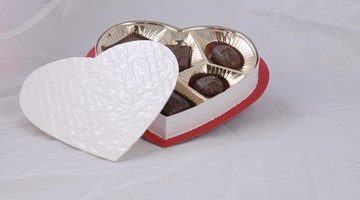How to Make a Mold With Household Stuff
Artists, cooks and modelers use a variety of different materials to make molds for their projects. The nature of the project ultimately determines what kind of material is best to use. If there are a lot of undercuts, for example, the crafter would use flexible, rubbery substances such as silicone or alginate.

Things You Will Need
- Oven
- Cornstarch
- Metal tray
- Prototype object
However, in a pinch you can make simple molds without special ordering these materials. You can use cornstarch to create a temporary one-piece mold that is safe to use with craft and cooking projects.
-
Set your oven to 250 degrees F. and wait for it to heat up completely.
-
Select a metal tray big enough and deep enough for the mold you wish to make. Fill it with corn starch.
-
Stick the tray in the oven for half an hour. This will dry the corn starch out completely. Remove the tray and let the cornstarch cool.
-
Use a whisk to fluff the cornstarch. Do not let the cornstarch become packed. It should be light and fluffy.
-
Run a ruler lightly over the bed of cornstarch to create a flat, level surface. Do not crush the cornstarch down, thereby packing it. Simply scrape it across the surface.
-
Press the object you wish to duplicate into the cornstarch firmly and remove it. It should create an impression. The mold cannot sustain a tremendous amount of detail, but items such as buttons or medals work well for this. Your casting material must be a viscous liquid, be it liquid candy or plaster of Paris. If you use a non-food object, do not reuse the cornstarch with food.
References
Writer Bio
Jennifer Meyer received her B.A. in anthropology, specializing in archeology, in 2004 from Beloit College. She then earned her master's degree in museum studies at Indiana University in 2007 after being awarded a university fellowship. She started writing in 2005, contributing podcast scripts, procedural guides and exhibit copy to museums in the Indianapolis metro area.
Photo Credits
- candy image by jimcox40 from Fotolia.com
- candy image by jimcox40 from Fotolia.com
More Articles



